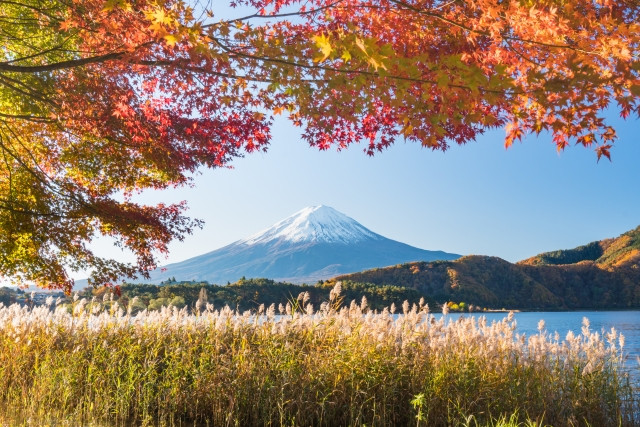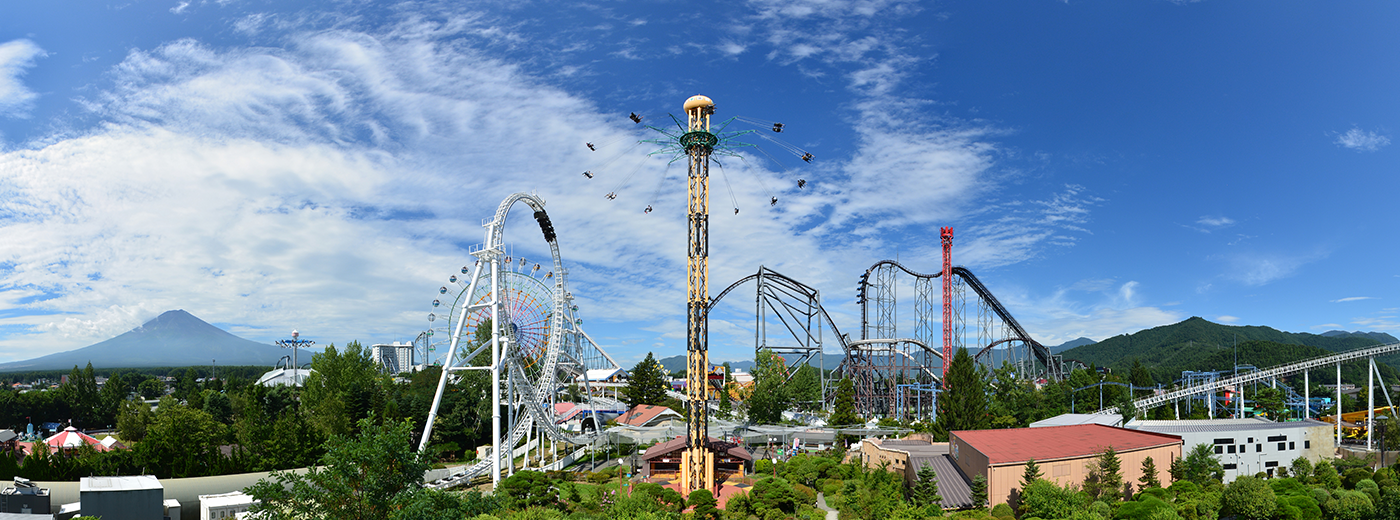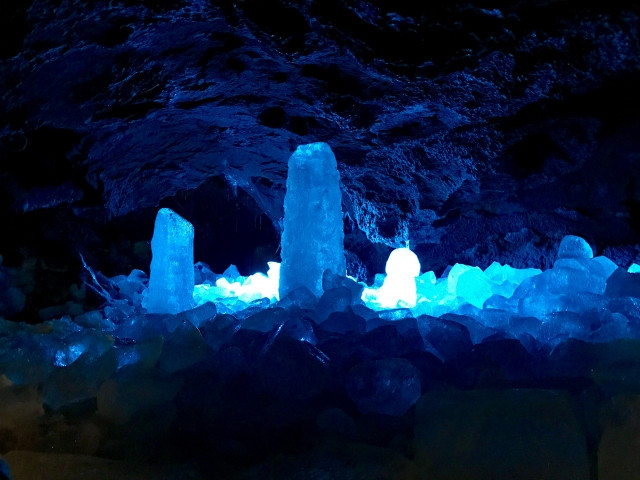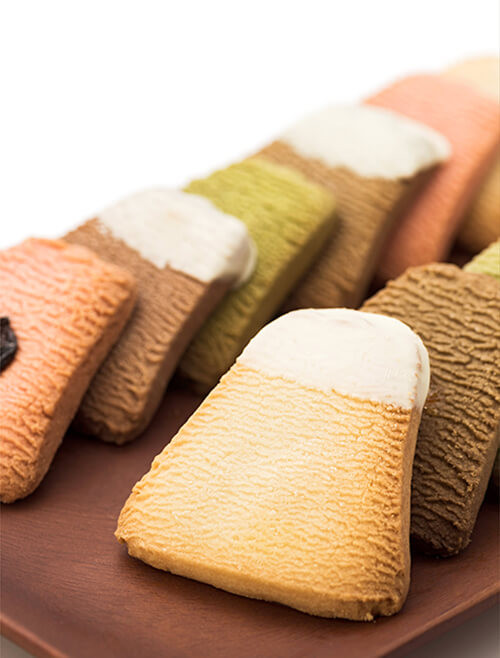Mount Fuji is beloved to Japan and admired greatly by many people overseas. In this article, we introduce the different things to do around and nearby Mount Fuji. From delicious food to rollercoaster rides, hidden ice caves and beautiful lakes, there are many ways to enjoy Mount Fuji.
Table of Contents
- Introduction to Beloved Mount Fuji
- History of Mount Fuji
- What does Fuji mean?
- Art Inspired by Mount Fuji
- Things to do at Mount Fuji
- Climbing Mount Fuji
- Best View of Mount Fuji from Fuji Five Lakes
- Great View from Arakurayama Sengen Park
- Activities to Enjoy Near Mount Fuji
- Gotemba Premium Outlet Shopping
- Fujiten Snow Resort
- Fuji-Q Highlands
- Fugaku Wind Cave and Narusawa Ice Cave
- Travel Tips to Enhance Your Mount Fuji Trip
- Mind the Weather
- Different Mount Fuji for Each Season
- Souvenirs to Buy
- Food to Eat
- Fun Facts About Mount Fuji
- Summary
Introduction to Beloved Mount Fuji

History of Mount Fuji
Mount Fuji is a stratovolcano that was formed by volcanic composites from the eruptions of volcanoes Komitake, Kofuji, and Shinfuji. Mount Fuji’s last volcanic eruption was during the Edo Period in 1707, it has since become dormant.
Mount Fuji has been a great source of inspiration in the field of arts. It is also a sacred location to devotees of Shinto and Buddhism as a pilgrimage site. The first ascent up Mount Fuji was in 663 by Japanese monk, En no Ozuno; whilst the first foreigner to climb Mount Fuji was Sir Rutherford Alcock who recorded his experience in his book “The Capital of the Tycoon”.
Till this day, Mount Fuji is beloved to the Japanese. Its historical, religious and artistic significance has been internationally recognized. In 2013, Mount Fuji was listed as a UNESCO World Heritage Site.
Mount Fuji's Name
Mount Fuji is known by many names including Fuji-san, Fuji no Yama, and Fujiyama. There are no clear records as to how Mount Fuji got its name, however scholars have come up with theories. One of the theories is that Fujisan is the amalgamation of two words; Fuji from the Ainu word for fire and san meaning mountain. Another popular theory is from early folk etymology, the word “Fuji” equates to “no equal” or “unparalleled” which implies that Mount Fuji’s majestic beauty is second to none.
Art Inspired by Mount Fuji

Mount Fuji has been the object of focus in many forms of art, like literature, paintings, poems, and more. One of the earliest depictions of Mount Fuji can be found in the Man'yōshū meaning “Collection of Ten Thousand Leaves”, an anthology of waka poems. Mount Fuji was also mentioned in a story called Taketori Monogatari, translated as The Tale of the Bamboo Cutter.
Illustration-wise, Mount Fuji has been depicted in some of the oldest paintings in Japan such as the Shotoku Taishi Eden or The Illustrated Biography of Prince Shotoku. According to Encyclopaedia Britannica, one of, if not the most famous pieces of art featuring Mount Fuji are the woodblock prints “The 36 Views of Mount Fuji” by famous Ukiyo-e artist Katsushika Hokusai.
※ Cabinet Office, Government of Japan, "Mount Fuji: World Heritage Site" ※ UNESCO World Heritage Centre, "Fujisan, sacred place and source of artistic inspiration" ※ Encyclopædia Britannica, Inc., "Mount Fuji"
Writer's Pick
Things to do at Mount Fuji
If you are planning a trip to Japan, a visit to Mount Fuji is highly recommended. Here are some recommendations of things to add to your itinerary. And don’t worry - climbing it is just the first suggestion. There’s plenty more!
Climbing Mount Fuji

Climbing Mount Fuji is one of the best ways to experience Mount Fuji as well as a great achievement.
Best View of Mount Fuji
Fuji Five Lakes

People often go out in boats onto the lakes to get a photo of Fuji reflected in the water, but you can also do so from the shores of these lakes as well!
Lake Yamanaka
The largest amongst the Fuji Five Lakes, Lake Yamanaka is a great place to escape the hustle and bustle of city life. During summers, you can even enjoy water sports like swimming and yachting, while in winter people come here to fish.
Lake Kawaguchiko
Lake Kawaguchiko is the most visited lake because of its easy access. It is also the second largest lake among the Fuji Five Lakes. Since the lake is located at the base of the mountain, it is an excellent and picturesque spot to admire Mount Fuji from. Lake Kawaguchiko is also a popular area for cherry blossom viewing in spring.
Lake Saiko
Nicknamed the “Maiden Lake”, the waters of Lake Saiko are a mysterious deep blue colour. Located along the lake is Saiko Kohan Campsite, a quiet area to enjoy camping with family and friends. If you are not keen roughing it in the wild, the campsite also offers proper overnight accomodation in the form of cabins.
Lake Motosuko
An alternative camping site is Motosuko Camping Ground on the banks of Lake Motosuko. Here, you can pitch a tent or rent a cabin and rough it out with Mt. Fuji as your background. Unlike the other Fuji Five Lakes, Lake Motosuko never freezes over in winter as it remains at a temperature above 3 deg celcius.
Lake Shoji
Lake Shoji is the smallest of the two and is the least "touristy" in terms of attractions, but it offers beautiful views of Fuji. And you can see a small mountain (Mount Omuro) in front of it, creating a unique view called 子抱き富士 (Kodaki Fuji) which means Fuji holding a small child. How cute!
Arakurayama Sengen Park

One of the best and most famous spots to view Mount Fuji. The park is well-known for its prime photographic location to capture shots of blooming cherry blossoms with Mount Fuji as a backdrop, or to capture the equally iconic 5 story pagoda with Mount Fuji as a background.
Activities to Enjoy Near Mount Fuji
Gotemba Premium Outlets
Eager for a spot of shopping? Visit Gotemba Premium Outlet, one of the biggest outlet malls in Japan. As an outlet mall or factory outlet, you can grab designer brand items at a cheaper price. Look out for sales where the prices will drop even further. This huge shopping area also has a great view of Mount Fuji. There’s buses out of Tokyo too!
Fujiten Snow Resort
For an action packed adventure, visit this winter wonderland for snow activities like skiing, snowboarding, and sledding. For the not so sporty bunch, Fujiten Snow Resort has an Observation Lift and Deck where you can admire the majestic Mount Fuji and bask in its glory from atop a mountain.
Fuji-Q Highlands

Photo Credit: 富士急ハイランド
One of the top amusement parks in Japan alongside Disneyland, Disneysea, and USJ. Fuji-Q Highlands is famous for its record-breaking thriller rides; Fujiyama dubbed “The King of Coasters” is one of the largest roller coasters in the world, Takabisha has a world record of having the steepest fall angle at 121°, and Do-donpa has won 2 titles - the fastest roller coaster in the world and the largest loop in the world.
Don’t forget to sit on the ferris wheel, as you reach the top you can catch a magnificent view of Mount Fuji. Sounds pretty romantic right?
Fugaku Wind Cave and Narusawa Ice Cave

Although not really a place to view Mount Fuji per se, one of the top visited tourist areas around Mount Fuji and Fuji Five Lakes is the Narusawa Wind Cave and Ice Caves. The Ice Caves were formed by hot lava from the eruption of Nagaoyama during the mid 860s. After its recognition as a natural monument by the Ministry of Education, it was presented to the world at large as a geological marvel. If you’re visiting Mount Fuji during the summer, make sure to drop by to cool down. The temperatures in the caves are stable throughout the year with an average of 3°C.
Entrance Fees: 350 yen (Adults)
Travel Tips to Enhance Your Trip

Planning to visit Mount Fuji? Here are some tips to remember to maximize your trip.
Accommodate the Weather
This is pretty obvious but a friendly reminder that Mount Fuji can only be seen on clear days. Plan your trip around the weather forecast, try to keep your schedule flexible so that you can rearrange your itinerary to accommodate Mount Fuji viewing weather.
Fuji Four Seasons
The iconic image of snow capped Mount Fuji is only available during the winter season. During the warmer seasons like spring, summer, and early autumn, the snow melts off Mount Fuji leaving it naked. Fortunately and coincidentally, the colder seasons like autumn and winter are the best seasons to view Mount Fuji as the weather is usually clearer at those times.
Souvenirs and Food
Commemorate your Mount Fuji trip with souvenirs. Thanks to Fujisan’s popularity, there are numerous choices of food and souvenirs inspired by Mount Fuji. Here are some souvenirs you should try!
Souvenirs

Photo Credit: © 2022 FUJIYAMACOOKIE
-
Mount Fuji Hororin Chocolate
-
KitKat Mount Fuji
-
Mount Fuji Alfort
Food

Mount Fuji World Heritage Centre, Cafe & Museum Shop
Try the lava ice cream, soft serve ice cream, and Mount Fuji blue curry
Hoto Noodles
A local specialty hotpot dish with super thick flat noodles (similar to fettuccine) in a miso broth and local seasonal vegetables.
Fun Facts About Mount Fuji
-
It is a volcano.
-
It is actually a combination of 3 volcanoes.
-
It can be viewed from various other places like Mount Takao and other mountains, Hakone, Tokyo Observation Decks like Skytree, and more - but again, clear weather is key!
Summary

There are plenty of other ways to enjoy the breathtaking view that is Mount Fuji that cannot be covered in this one article like glamping, museum trips, shrines, onsen trips and more but this here is a good start to help you on your way. We hope this will give you a push in your back to plan a trip here soon!





















.jpg)











